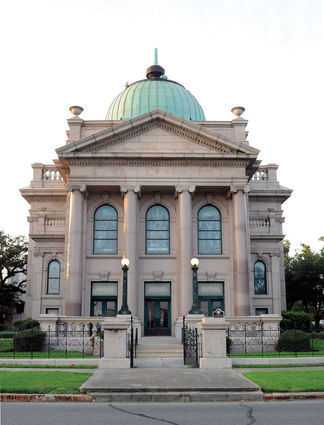100th anniversary for air conditioning in Orange
Last updated 8/7/2012 at Noon
The summer heat may be sweltering but those wanting to escape the heat have been able to do so for 100 years in Orange with the first public building in the south, the First Presbyterian Church, to have the luxury in August 1912.
In 1902, a year after Willis Carrier graduated from Cornell University with a masters degree in engineering, he landed a job at a printing company in New York. They paid him $10 a week. However, the company was struggling with the heat and humidity which caused the colors to run. Carrier invented a device which made printing possible and made him a very valuable employee. The invention controlled the temperature. Carrier later went into business for himself and was contacted by Frances Ann Lutcher to install air conditioning in the First Presbyterian Church.
The church was organized in April 1878 under the guidance of Dr. W.H. Vernor and Dr. R.H. Byers. The first chuch building was located at Market and Polk Streets. The current building was planned, errected and paid for by Frances Ann Lutcher. She wanted to build the church as a memorial to the Henry Jacob Lutcher family and it was named the Lutcher Memorial Church Building.
Frances Ann Lutcher took it upon herself to do all the planning and choosing of the windows herself. An architect from Kansas City, Mo., James Olver Hogg, was hired for the design. The granite is a native Texas stone and comes from Llano. However, the marble is from Italy. Construction began in 1908 and the glorious structure was completed in 1908. It was formally dedicated in January 1912.
The plans for air conditioning was not without hurdles to overcome. But, when there is a will, there is a way.
Church records have been lost over the years and it is not certain which system was first used at the church. But, it is believed since Carrier held a patent on an air conditioning system which used ammonia, this was the first sytem installed in the church. However, it was toxic and highly flammable. Also under consideration is the first air conditioning unit may also have been a system which used water and carbon dioxide. This system would have worked similiar to the unit with ammonia, according to Record archives.
In addition, electricity would have been a problem. The air conditioning system would have taken two-thirds of the power available in Orange. The solution was to build a power source just for the church.
Carrier built a powerhouse which was built behind the main church building. Crews installed a 200 horsepower engine which ran on crude oil.
A newer air conditioning system was installed in the church in the late 1920s. As the years rolled by, another unit was installed in the 1950s. Eventually, a 50 ton unit was implemented and still keeps the church cool and visitors comfortable.
Some of the original duct work and piping are still used in the church as part of the current Carrier system. However, some things have changed. The powerhouse where the chief engineer once lived on the top floor now serves another purpose. The remainder of the powerhouse such as the top three floors was removed many years ago.
Through out the entire project, Frances Ann Lutcher kept costs a secret which also remains in effect to this day. To make sure the building was maintained properly and church members would not be burdened with upkeep, she set up an endowment, according to Record archives.
Few records are left of how the structure came to be. Only a few drawings remain. But, the church still stands as one woman’s plan to leave a memorial for future generations while enjoying a little comfort as they gather during the long hot summers of Orange.













Reader Comments(0)